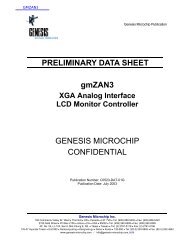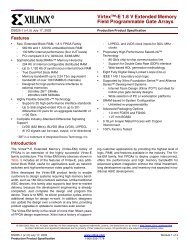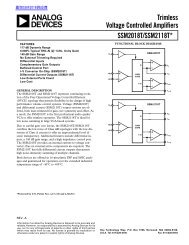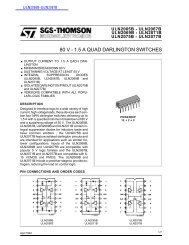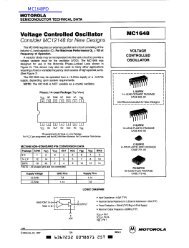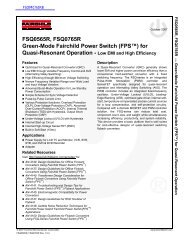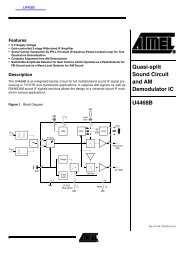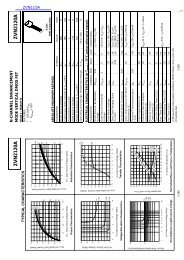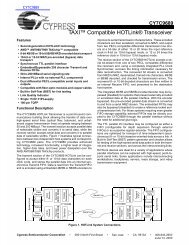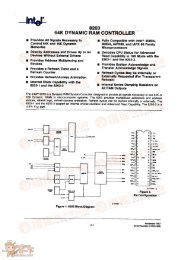You also want an ePaper? Increase the reach of your titles
YUMPU automatically turns print PDFs into web optimized ePapers that Google loves.
Numonyx <strong>Wireless</strong> <strong>Flash</strong> <strong>Memory</strong> (<strong>W30</strong>)<br />
13.0 Security Modes<br />
The <strong>W30</strong> flash memory device offers both hardware and software security features to<br />
protect the flash memory data.<br />
• To use the software security feature, execute the Lock Block command.<br />
• To use the hardware security feature, execute the Lock-Down Block command and<br />
assert the WP# signal.<br />
Refer to Figure 33, “Block Locking State Diagram” on page 72 for a state diagram of<br />
the flash device security features. Also see Figure 34, “Locking Operations Flowchart”<br />
on page 75.<br />
13.1 Block Lock Operations<br />
Individual instant block locking protects code and data by allowing any block to be<br />
locked or unlocked with no latency. This locking scheme offers two levels of protection:<br />
• Software-only control of block locking (useful for frequently changed data blocks).<br />
• Hardware interaction before locking can be changed (protects infrequently changed<br />
code blocks).<br />
The following sections discuss the locking system operation. The term state [abc]<br />
specifies locking states, such as state [001]. In this syntax:<br />
• a = WP# value.<br />
• b = block lock-down status bit D1.<br />
• c = Block Lock status register bit D0.<br />
Figure 33, “Block Locking State Diagram” on page 72 defines possible locking states.<br />
The following summarizes the locking functionality.<br />
• All blocks power-up in a locked state.<br />
• Unlock commands can unlock these blocks, and lock commands can lock them<br />
again.<br />
• The Lock-Down command locks a block and prevents it from being unlocked when<br />
WP# is asserted.<br />
— Locked-down blocks can be unlocked or locked with commands as long as WP#<br />
is deasserted.<br />
— When WP# is asserted, previously locked-down blocks return to lock-down.<br />
— The lock-down status bit clears only when the flash device is reset or powereddown.<br />
Block lock registers are not affected by the V PP level. These registers can be modified<br />
and read even if V PP < V PPLK .<br />
The locking status of each block can be set to locked, unlocked, and lock-down, as<br />
described in the following sections. See Figure 34, “Locking Operations Flowchart” on<br />
page 75.<br />
November 2007 Datasheet<br />
Order Number: 290702-13 71



